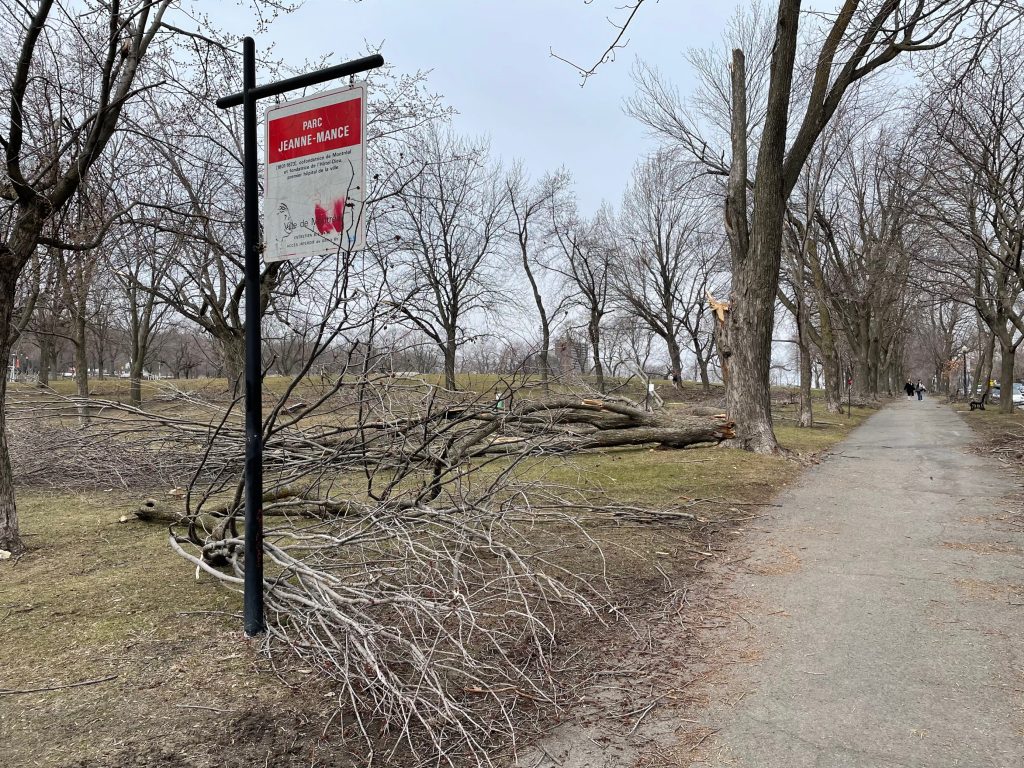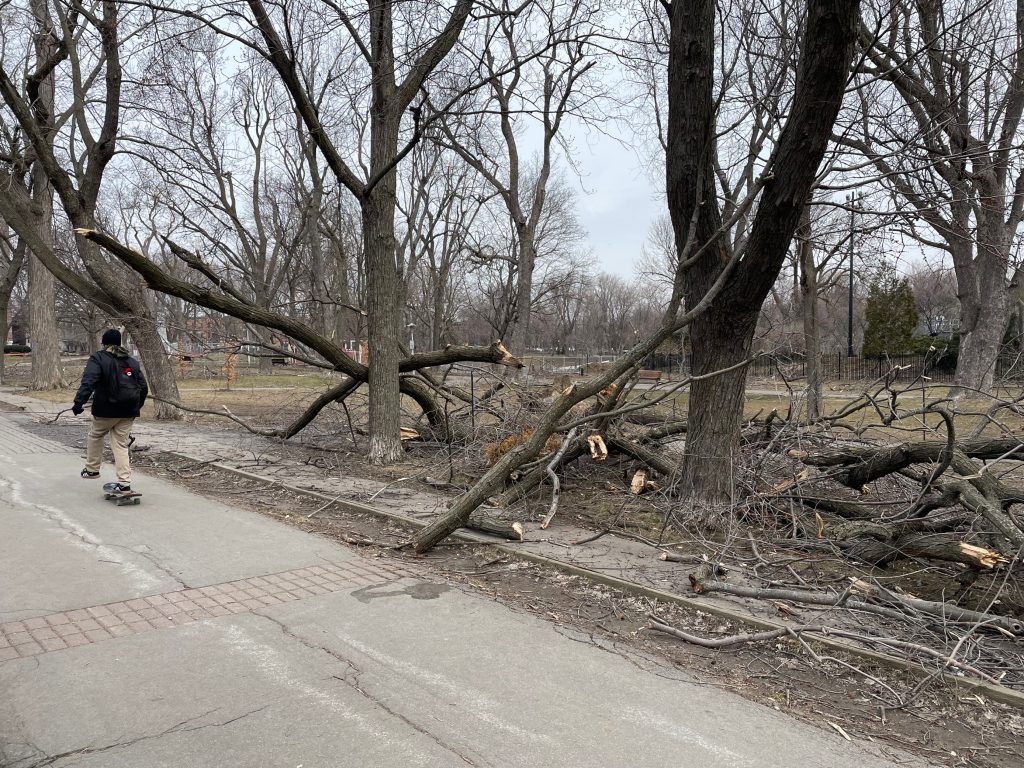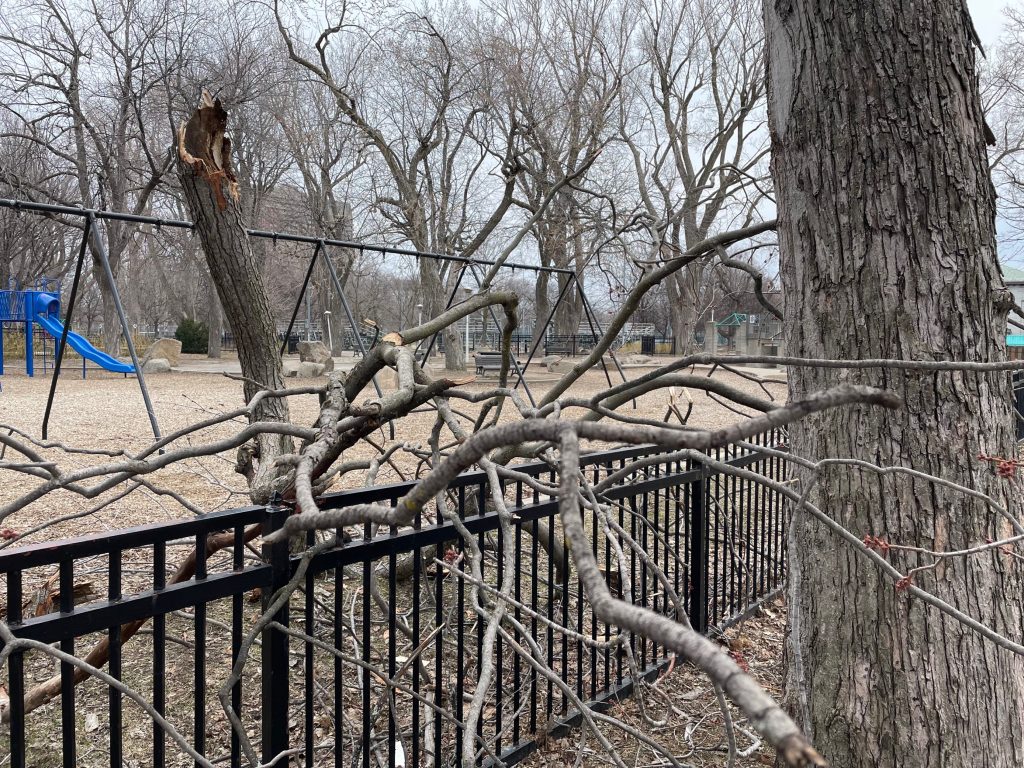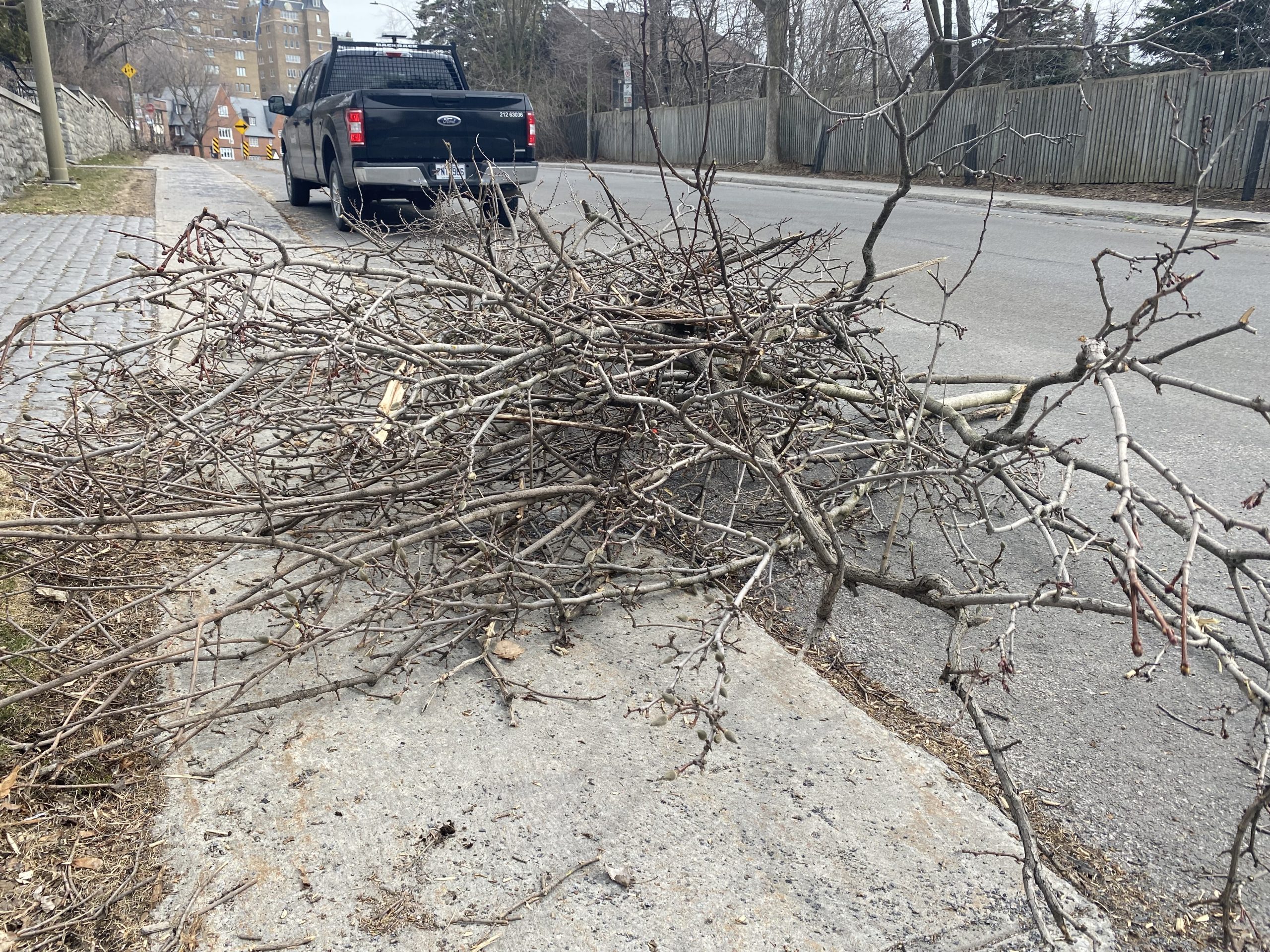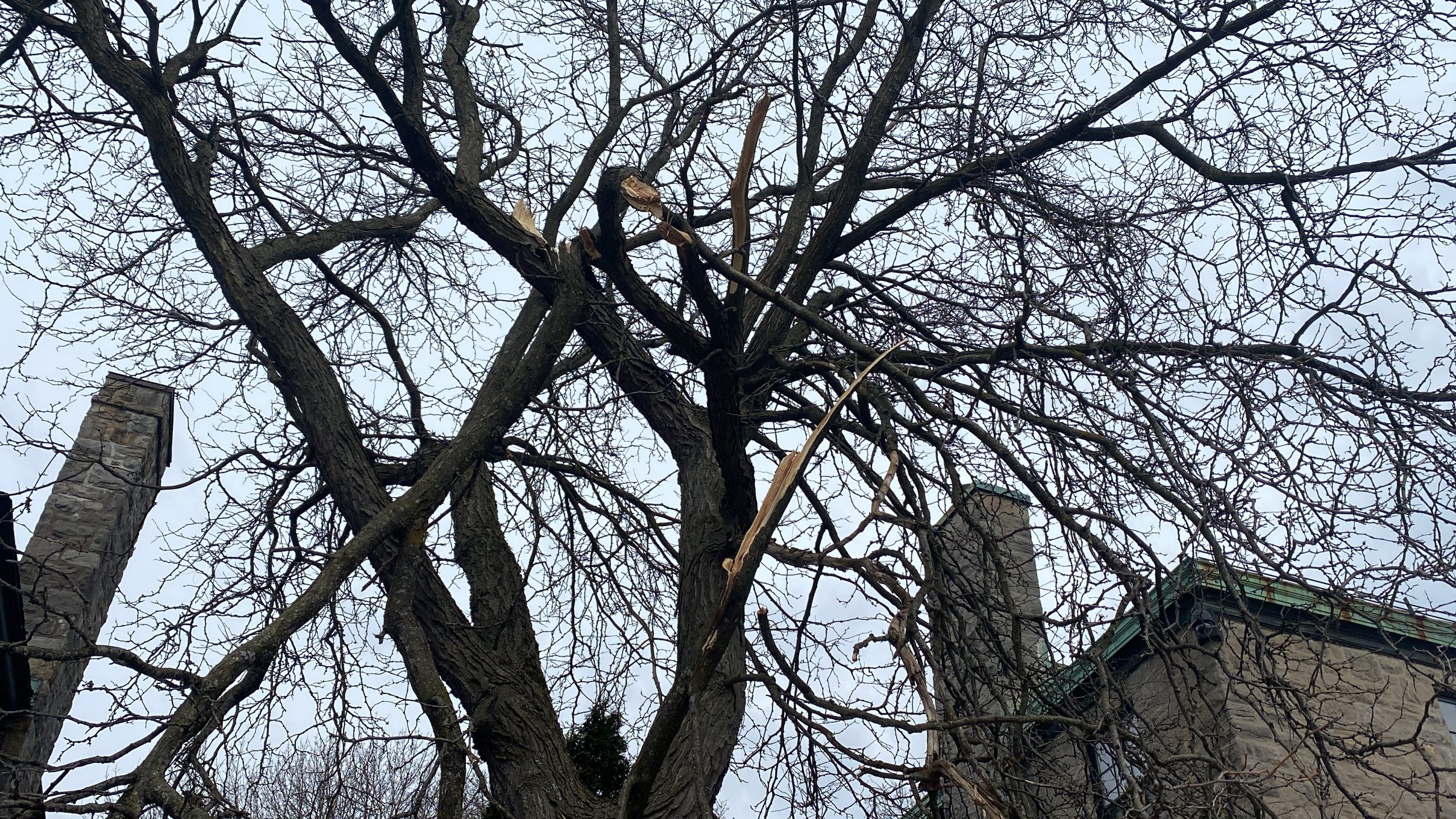Ice storm: more than 4,500 branches, 900 fallen trees reported in Montreal

Posted April 11, 2023 9:59 am.
Last Updated April 11, 2023 7:52 pm.
With the snow and ice from last week’s storm long melted, the split tree trunks and thousands of fallen branches in Montreal are a clear reminder of what the city went though – and in many cases, still is.
“Oh it makes me sad,” Montrealer Caroline Kalaydjian told CityNews. “Especially when you go through all the parks and you see all the trees that are down. It’s so sad.
“Some of the oldest trees up on the mountain, it looks like they’ve been struck by lightning. They’re like literally split in half down the trunk.”
Montreal is still recovering from the April 5 ice storm that saw 450,000 Hydro-Quebec customers lose power in the metropolis alone. More than one million Quebec households were without power at the peak.
But as power continues to return to nearly all homes, Montreal’s sidewalks and parks are littered with thousands of branches, as workers attempt to clear them all.
The City of Montreal has reported that since the ice storm began, the 311 service has recorded more than 920 requests to report fallen trees and more than 4,560 requests for collapsed branches.
“But it’s only on the public domain,” said Philippe Sabourin with the City of Montreal. “It’s here you have all the trees and the branches coming from the park.”
Sabourin estimates there could be roughly 10,000 branches that fell.
“We’ve been working since Wednesday, 24 hours a day to grab those branches and off the street. Actually we’re starting to catch up on the clearing operation where we have somewhere around 1,000 workers on duty, either grabbing the branches on the street first, then we will clear the parks.”
Fallen branches can be beneficial, says forest ecologist
Maintenance of trees along streets and in local parks is the responsibility of the boroughs. Various professionals such as forestry engineers, arboriculture inspectors and tree trimmers assess the damage done to trees before deciding on the necessary intervention.
“Of course, these branches, it looks bad, but we have to think that the tree is not like an animal,” said Christian Messier, a professor of forest ecology at UQAM. “I mean, every part could be replaced easily. They don’t have a heart or a lung like us. So every branch, they would be able to regrow it very quickly, replace it.
“These are for the trees that may not have maybe lost more than 30, 40 per cent of their branches. If they lose more than this, then it can actually affect their survival or their health. But usually when they lose around 30, 40 per cent, they will recover. And they are really well adapted for this kind of disturbance.”
Trees that pose immediate safety concerns are removed.
“There are hundreds of thousands of trees in the city,” said Messier. “So it’s still a very small fraction that has really ruptured. And usually it’s because they were probably already weak, maybe they were rotten in some part.
“Of course, to see all these branches down, I mean, it’s kind of sad. But in the same time, we have to understand that this is actually a mechanism that trees have developed to stay alive and to stay up. Because when they are losing branches like this, they are actually recalibrating their stability, so that they are able to better cope with the additional ice that they were getting. So they are shedding some branch to stay up and to be surviving.”
It is not known exactly how many trees were downed as a result of the storm.
A falling branch killed a man in his 60s on Thursday morning in the backyard of his home in Les Coteaux, about 70 kilometres southwest of Montreal.
Where do the fallen branches go?
Trees cut down in certain large parks are sent to the Centre de valorisation des bois urbains to be transformed into boards or chips for pulp.
Branches collected by city crews at the curb are transported to the Saint-Michel Environmental Complex. The material is then transformed into wood chips for various uses such as the manufacture of particleboard used in construction.
“The operation will last a month,” said Sabourin, who described it as an emergency situation. “So it’s not a matter of a week. Take care of our trees during the next coming month.”
The destruction hit very close to home for some.
“When the storm was really at it, I heard this big, huge crash really close to my house, like it was on my house,” Angela Mallozzi told CityNews. “And I ran out of my solarium because I was worried, ‘oh my gosh, if anything comes crashing down on all these windows, I’m done for.’
“But then I couldn’t figure out where it was coming from. The next morning I saw that it was a big tree that had fallen out of the neighbour’s backyard and onto the back porch. It’s still there.”
—With files from The Canadian Press
